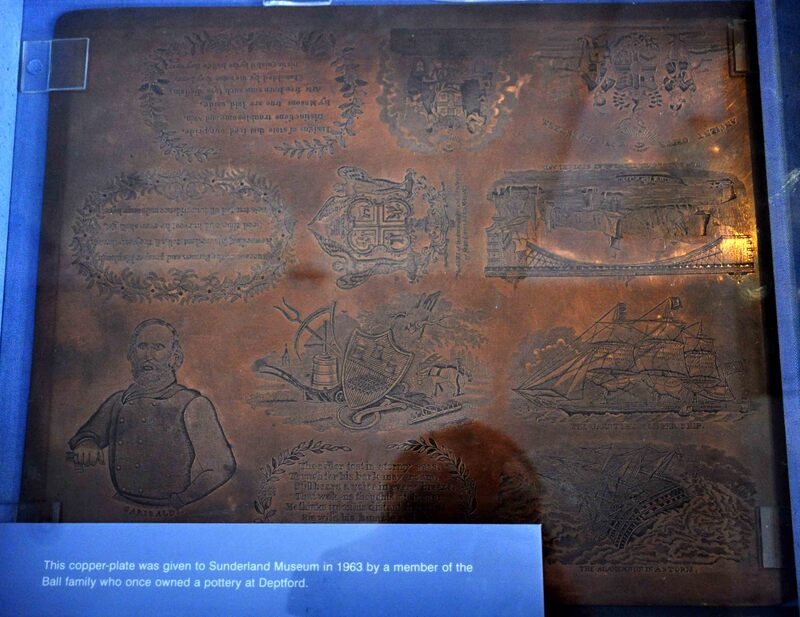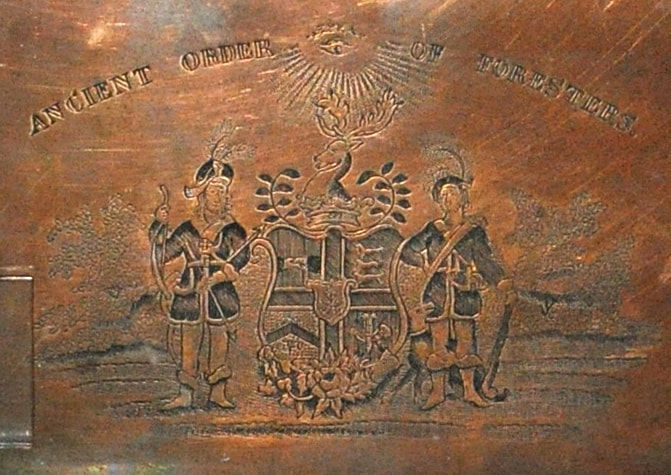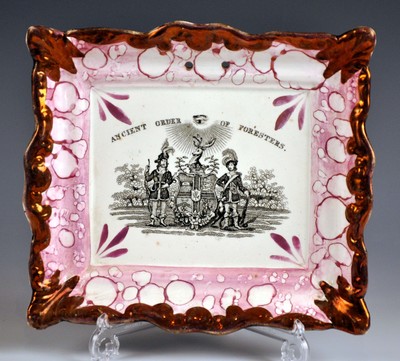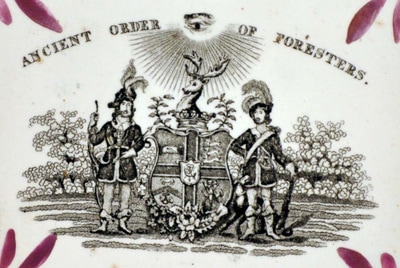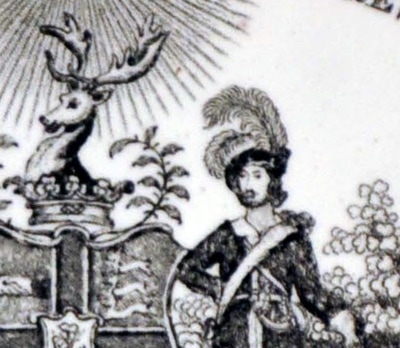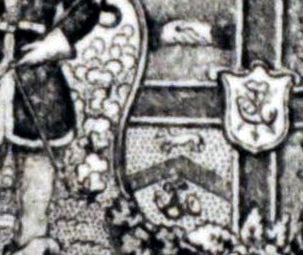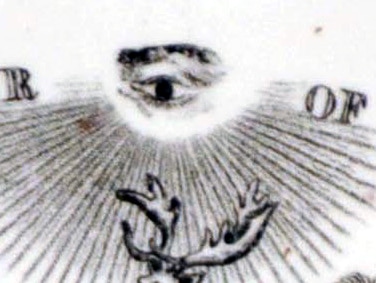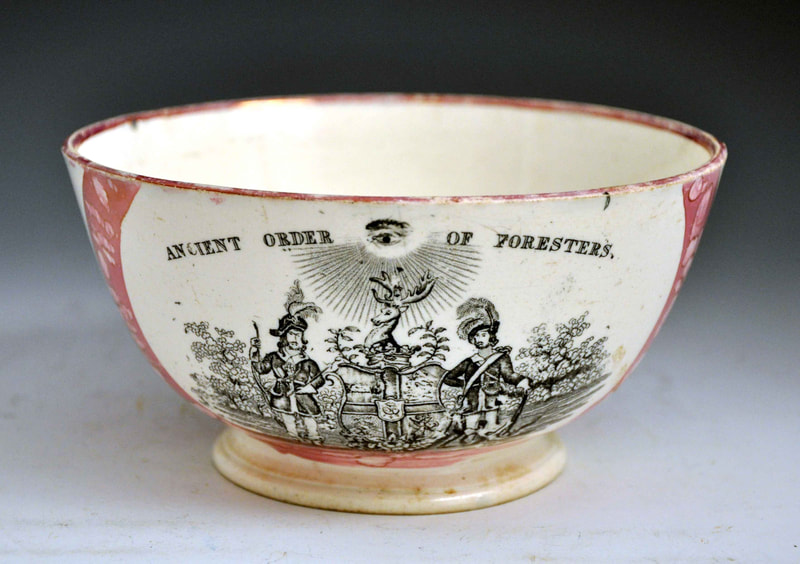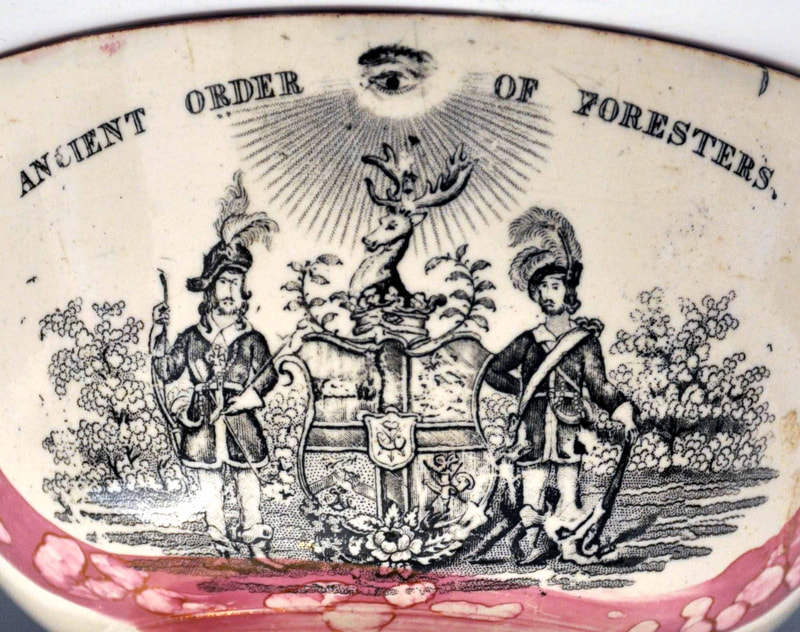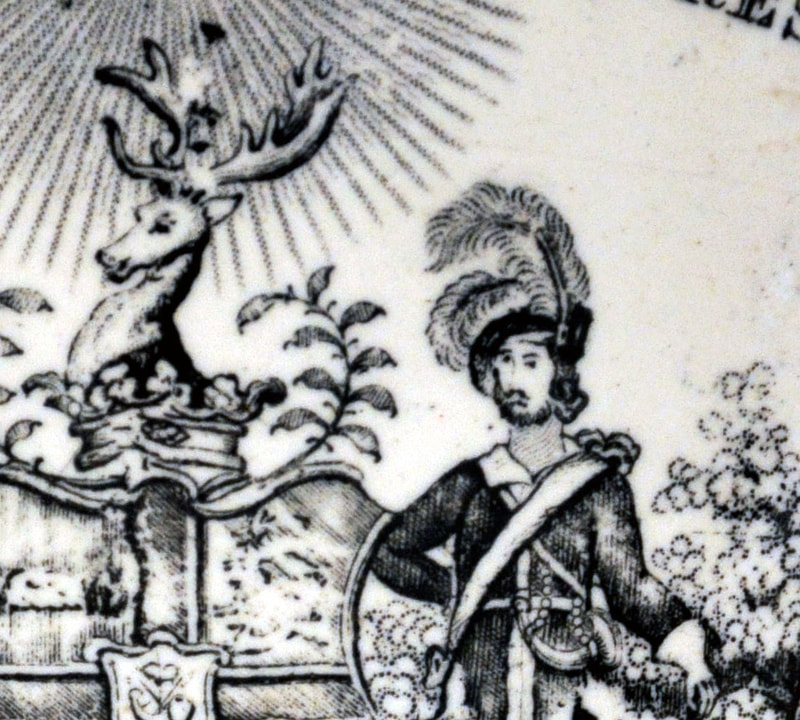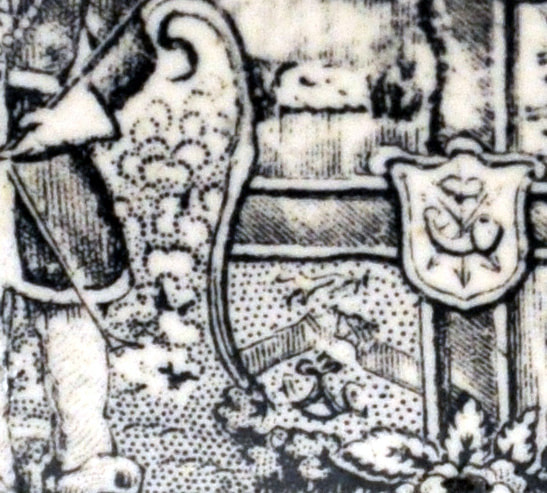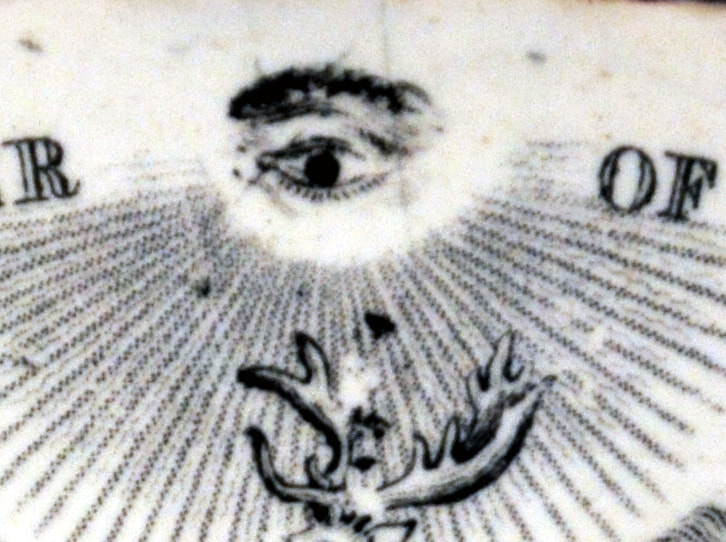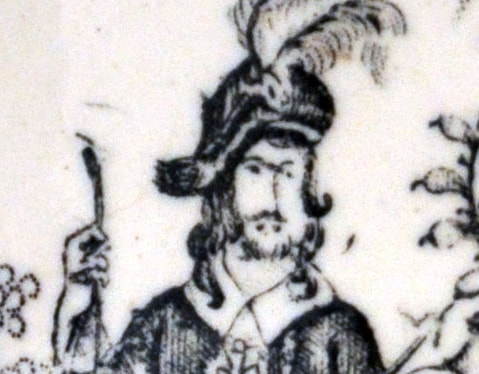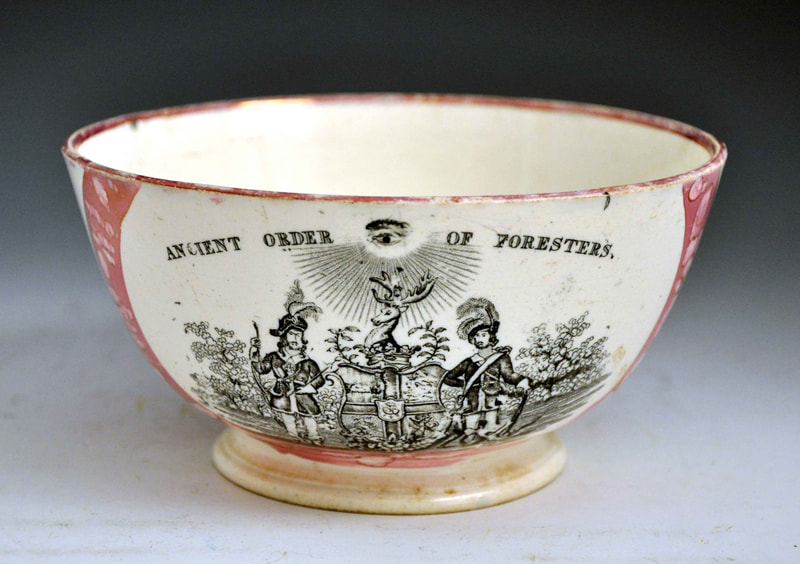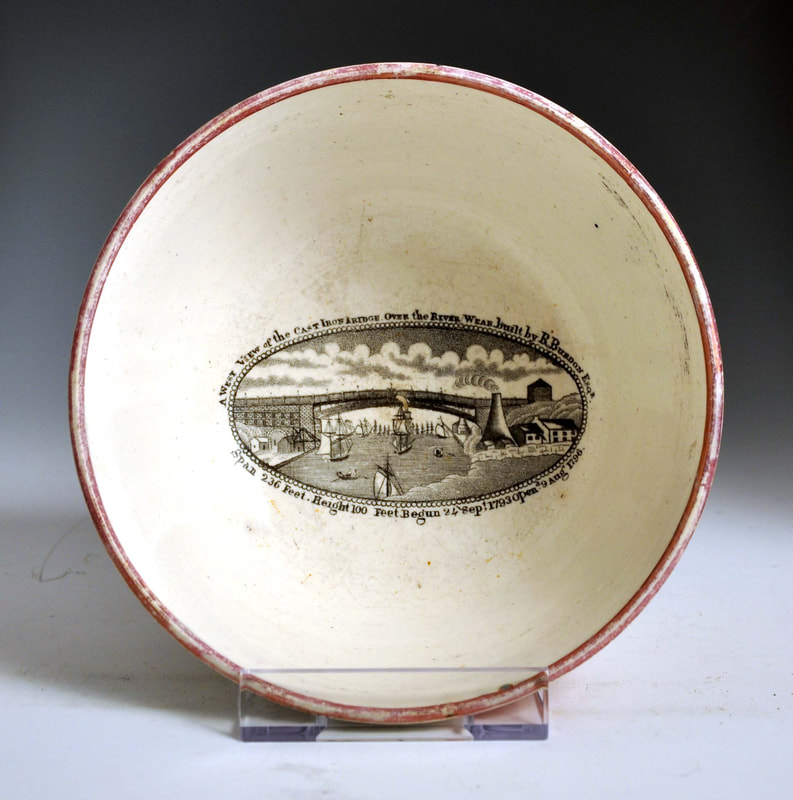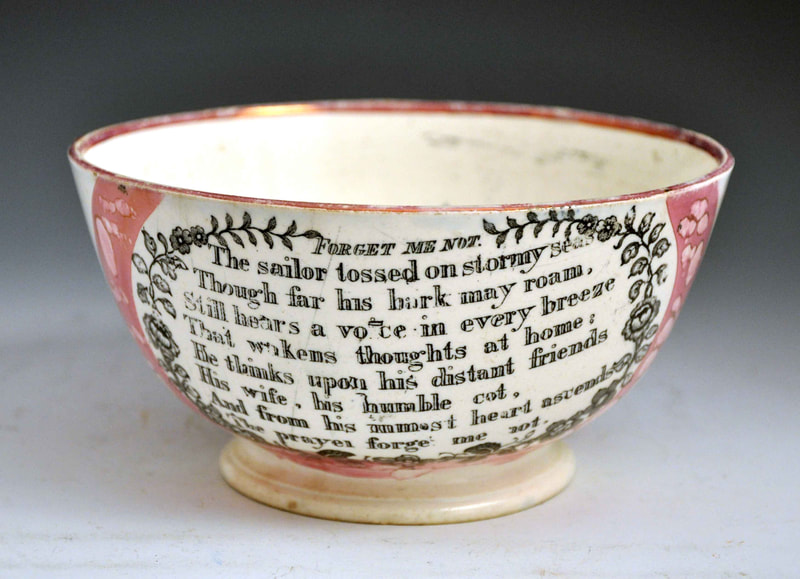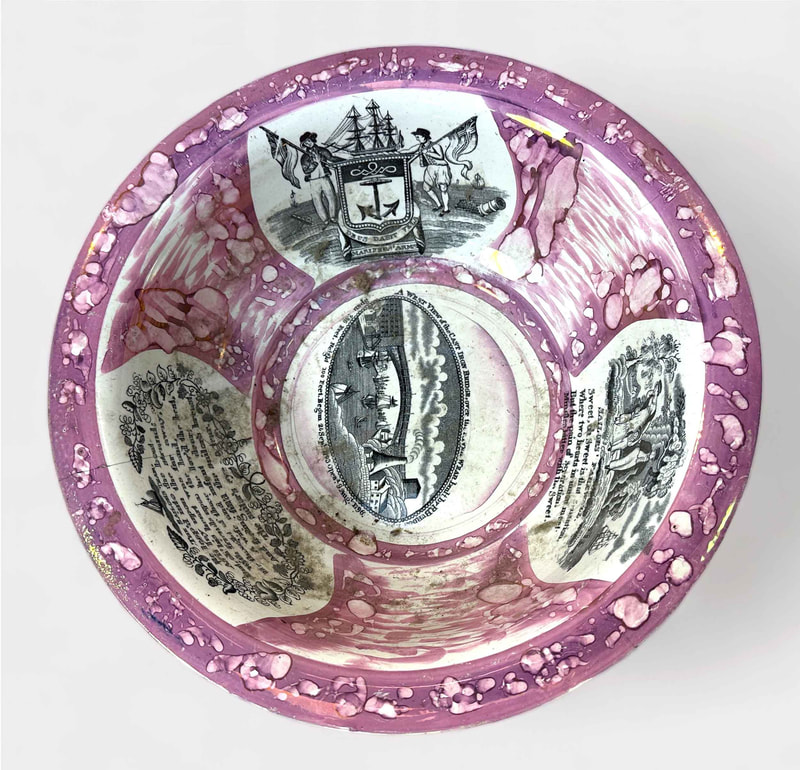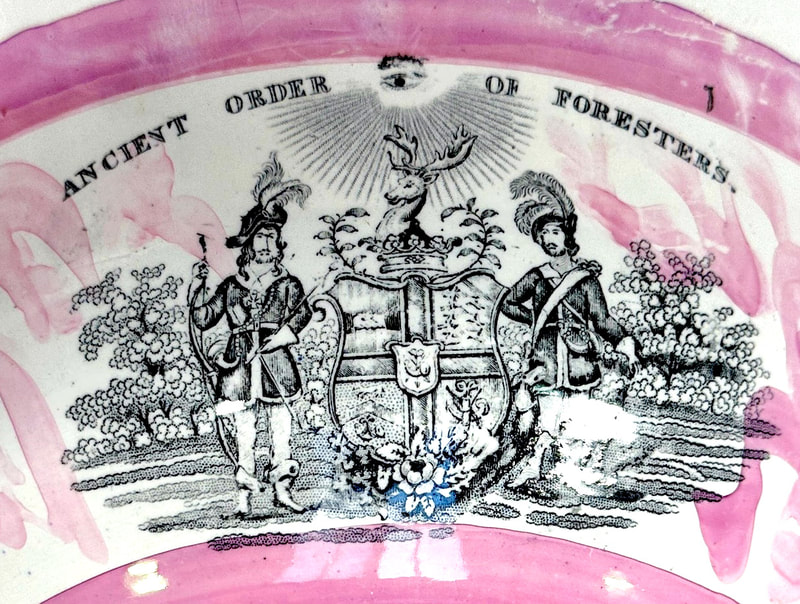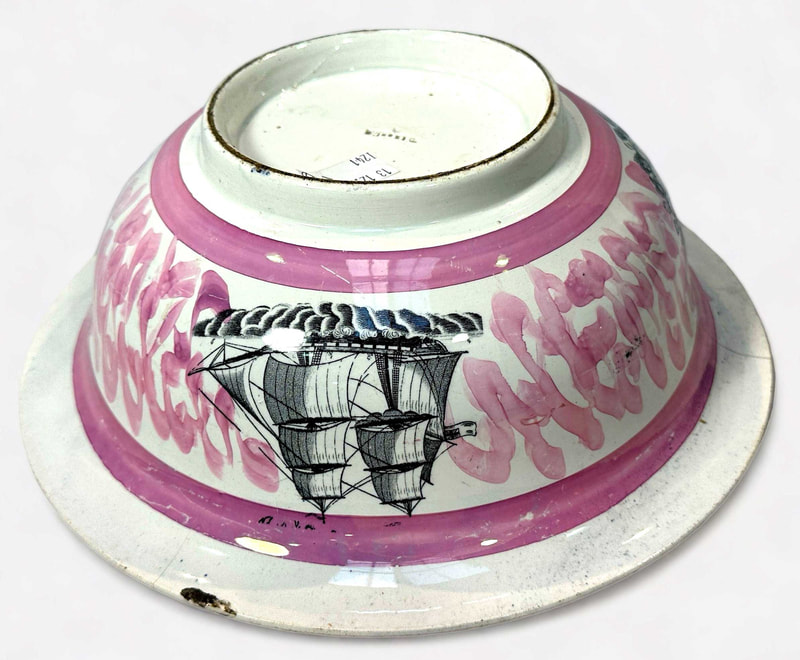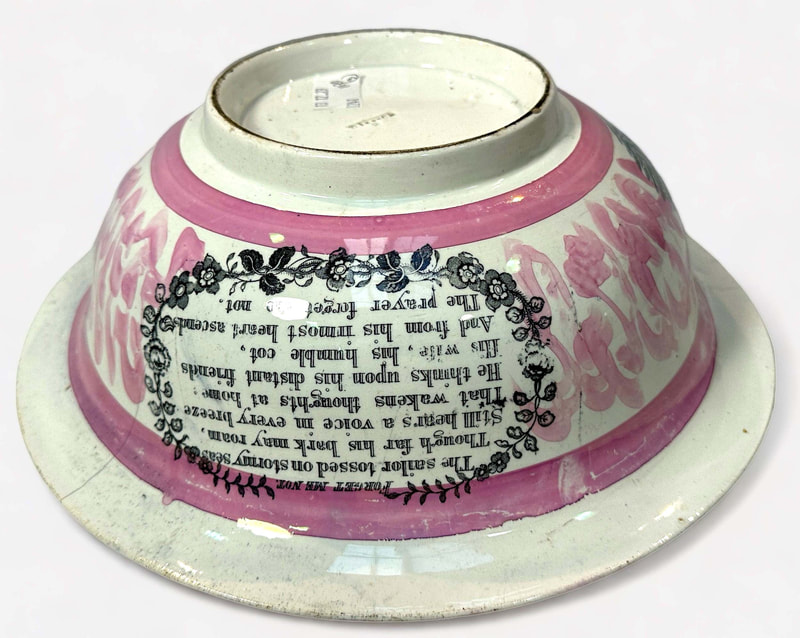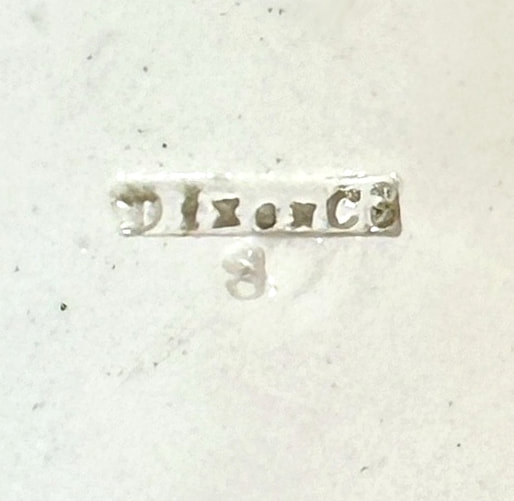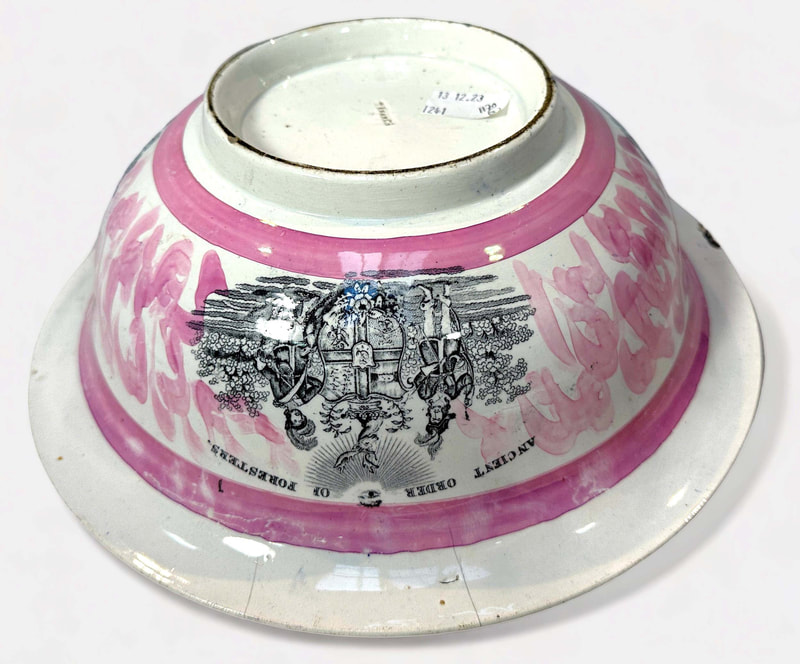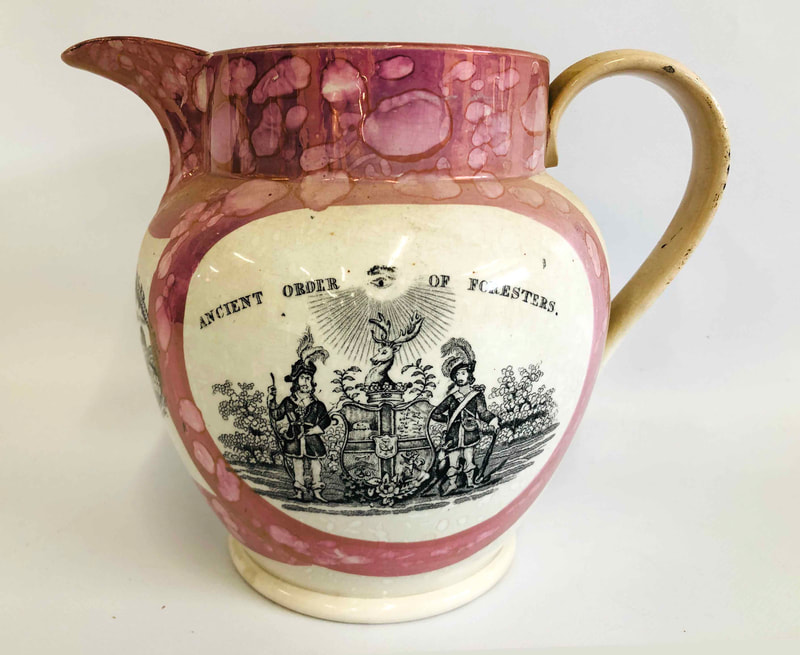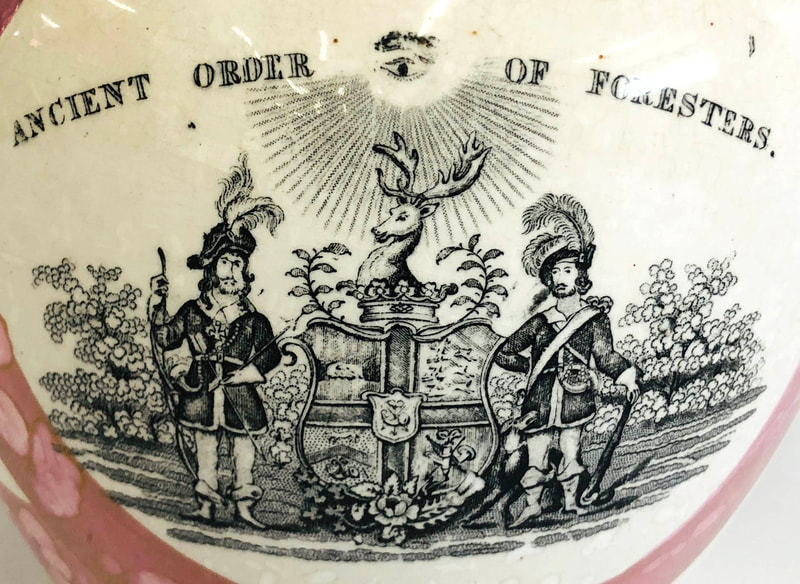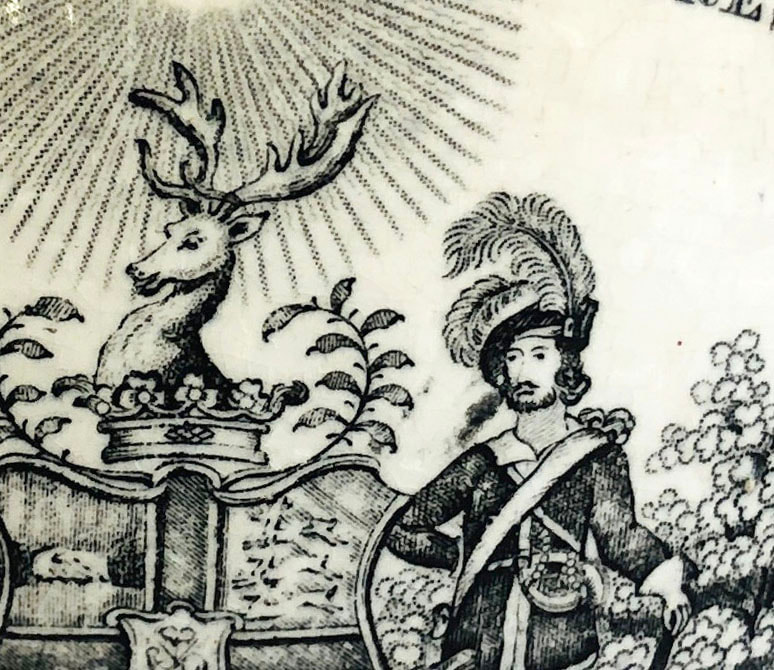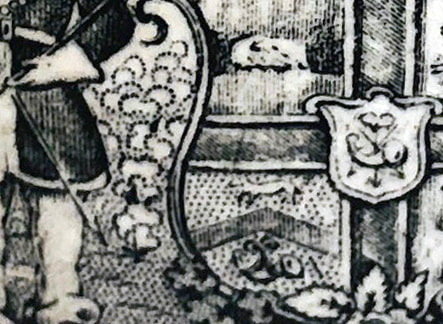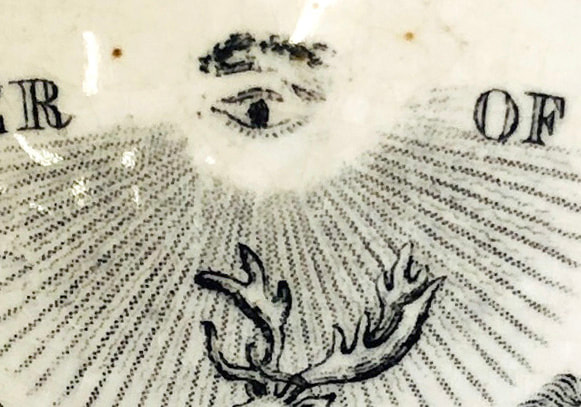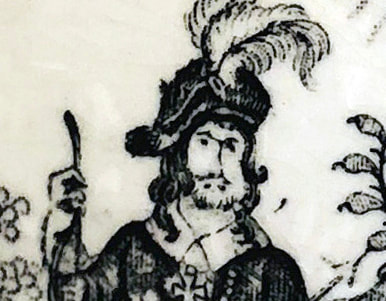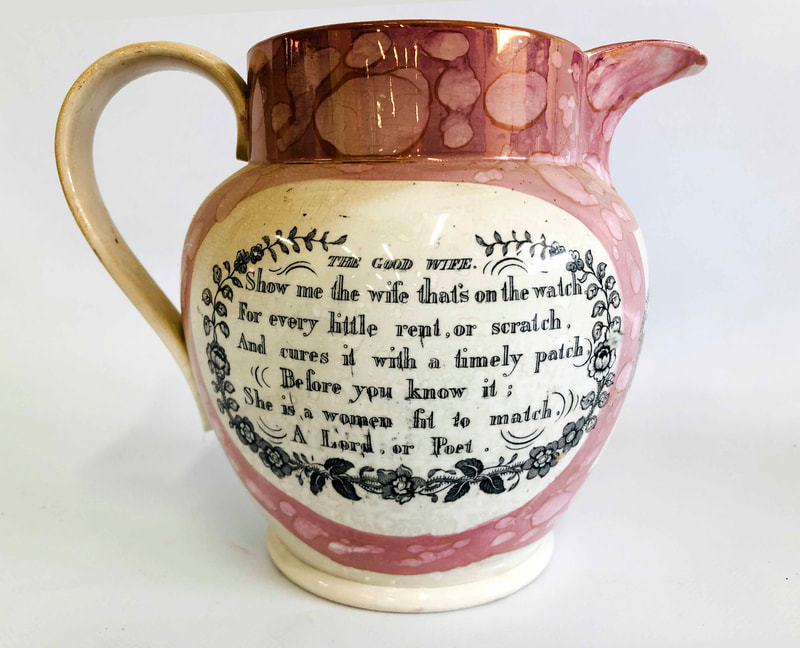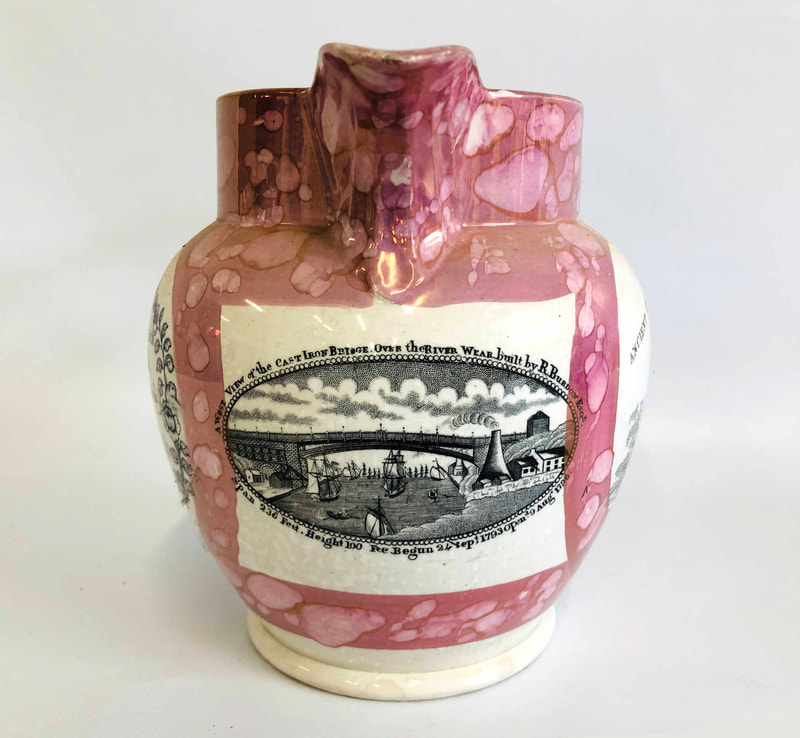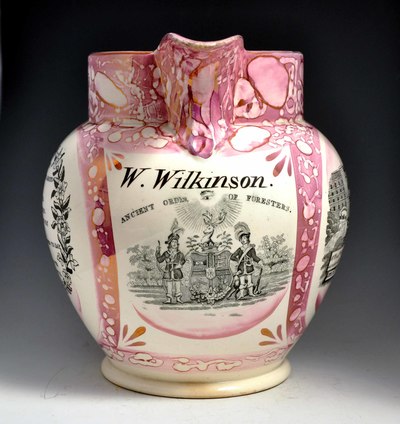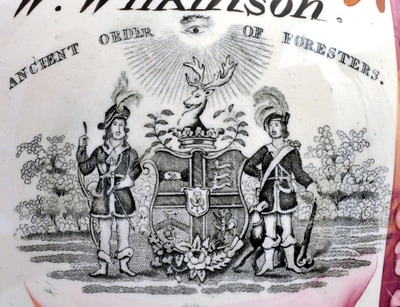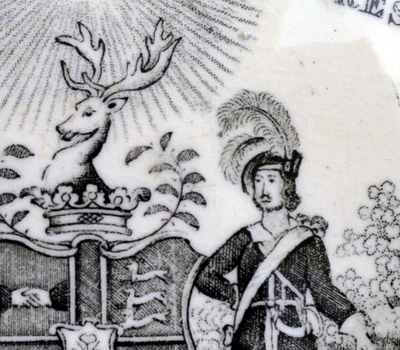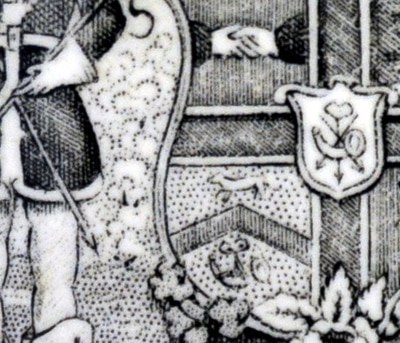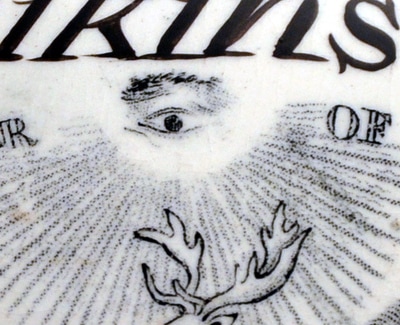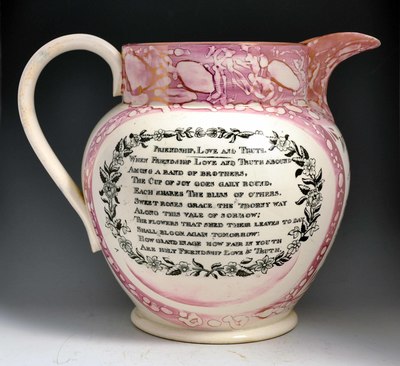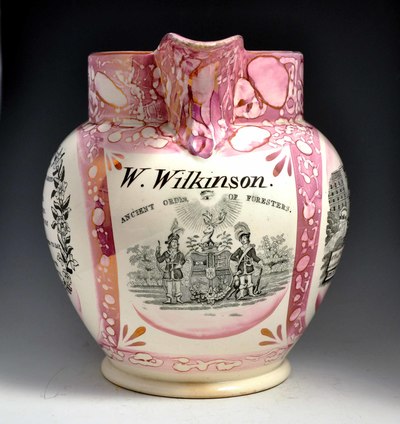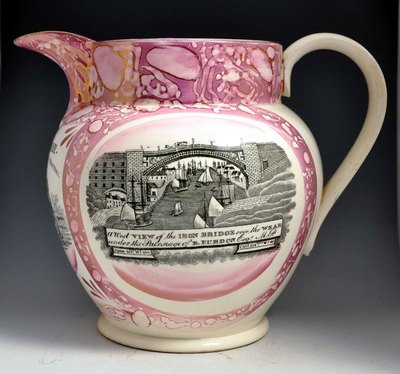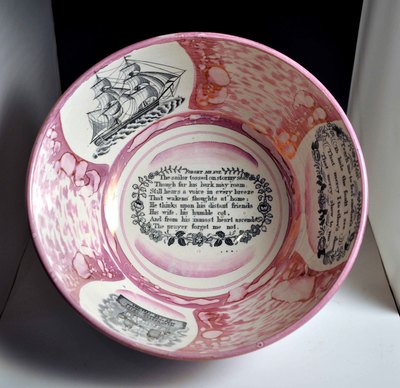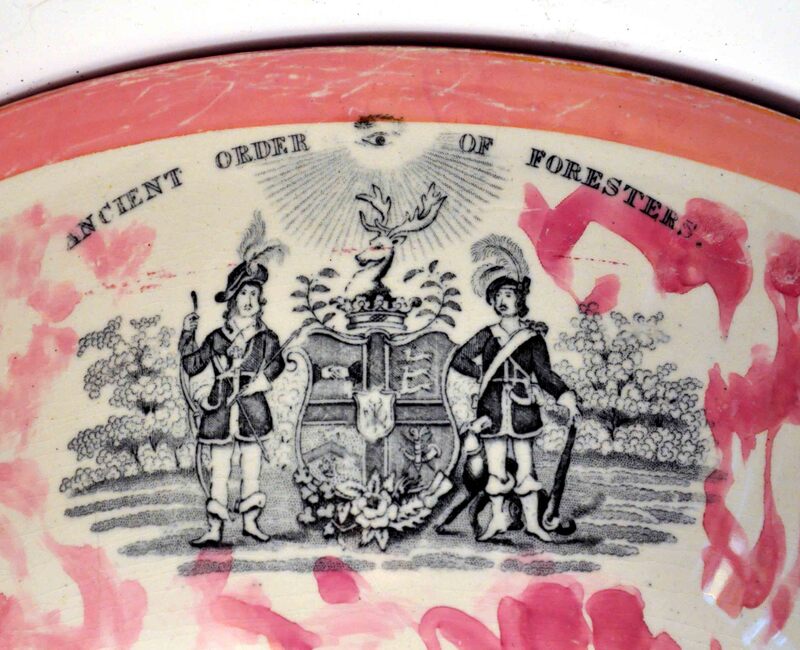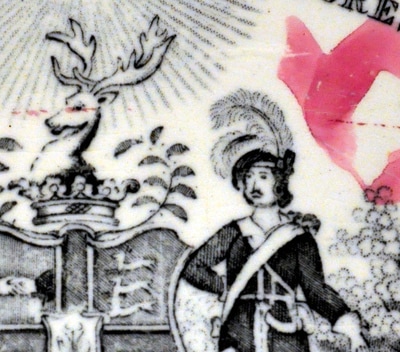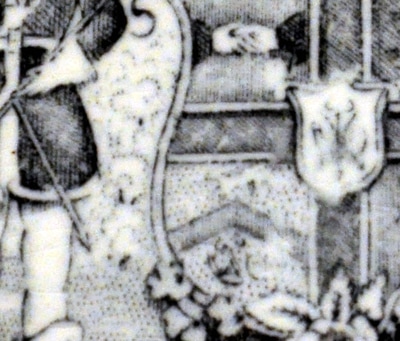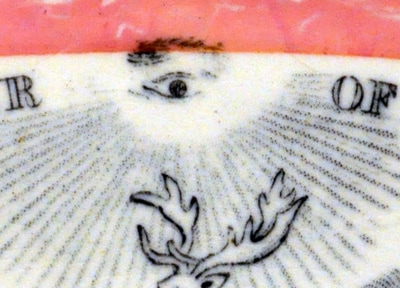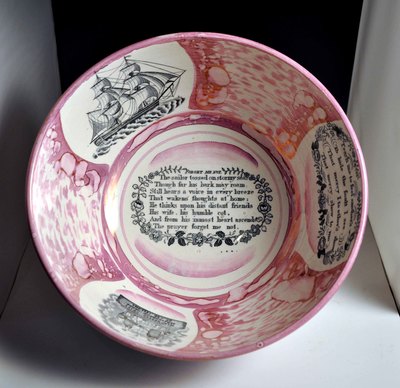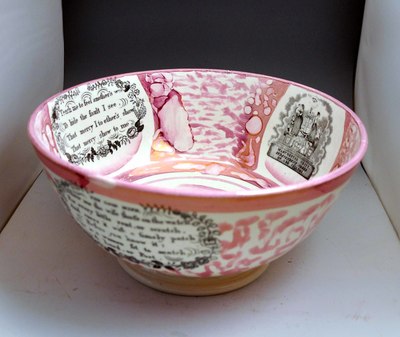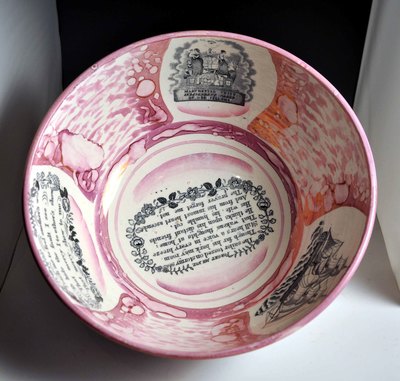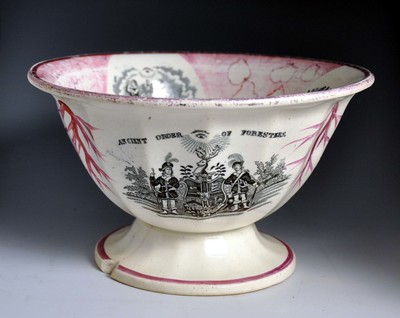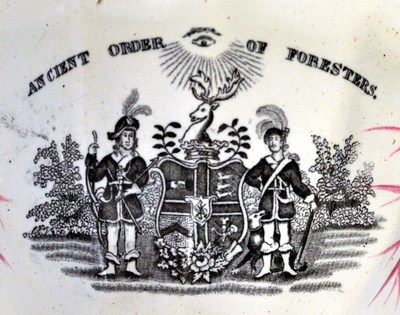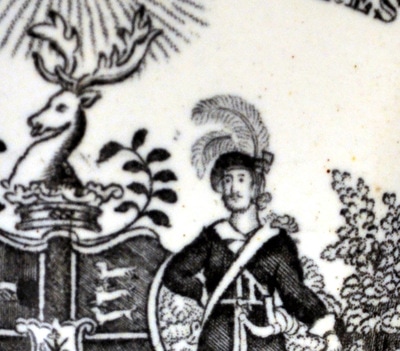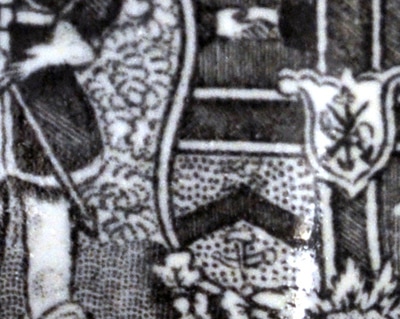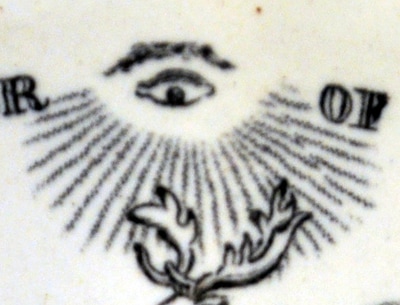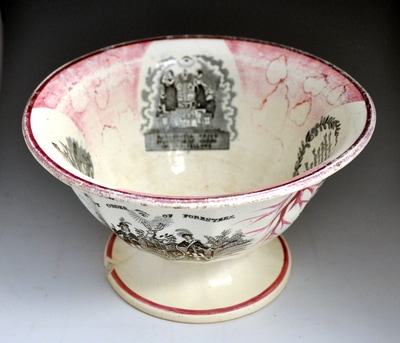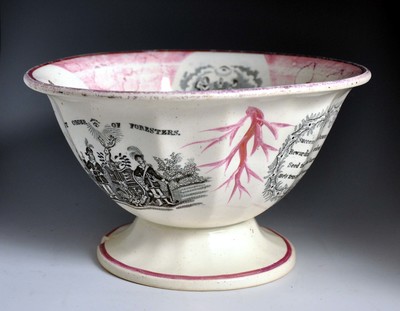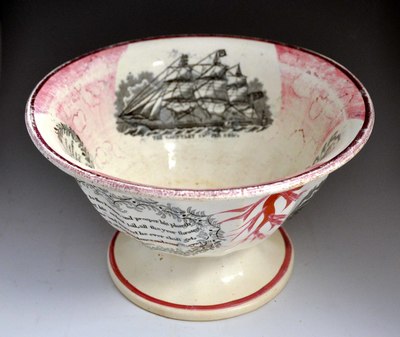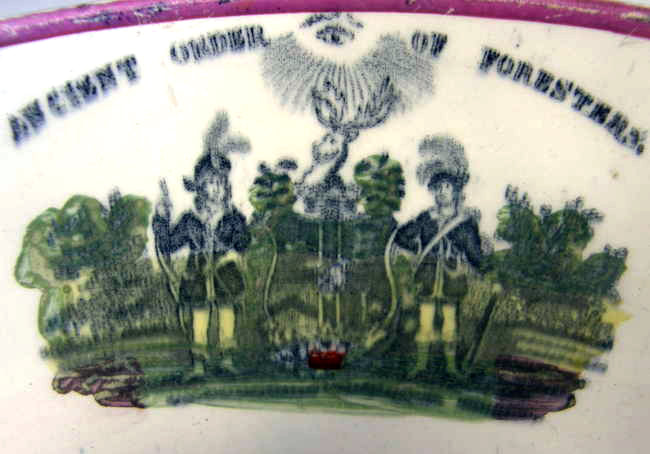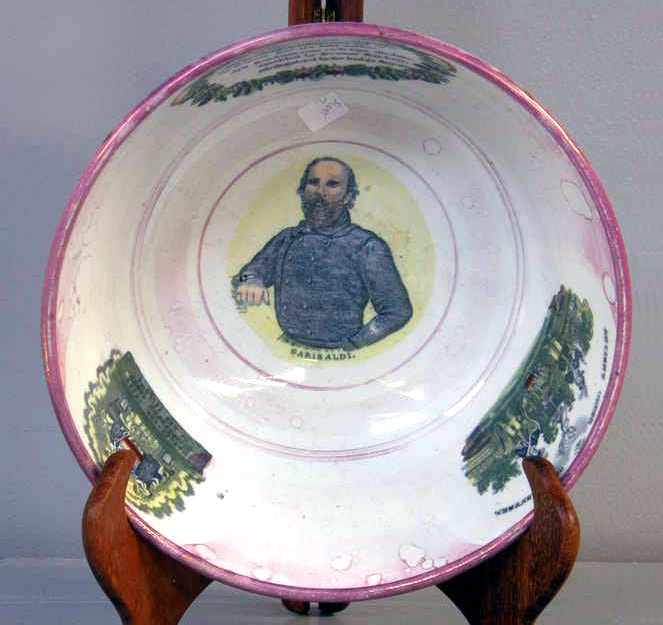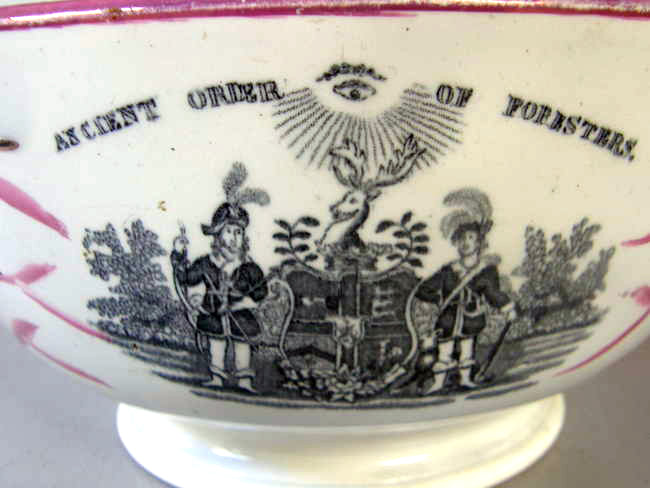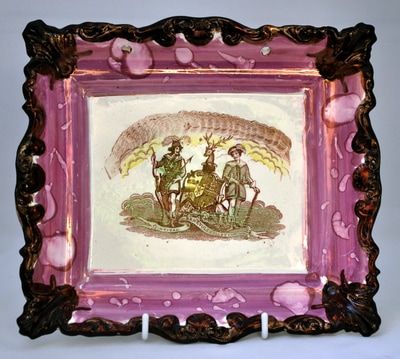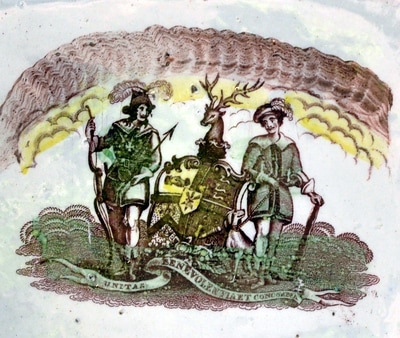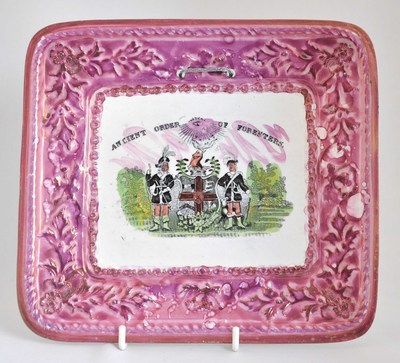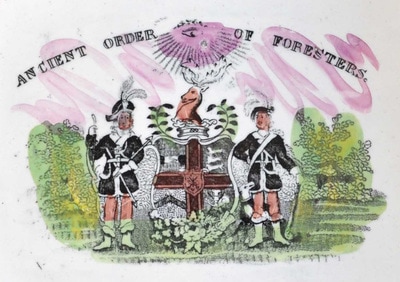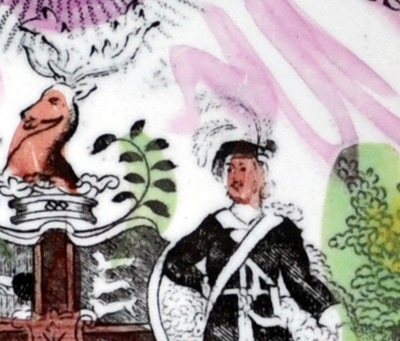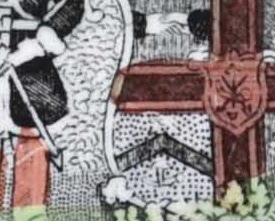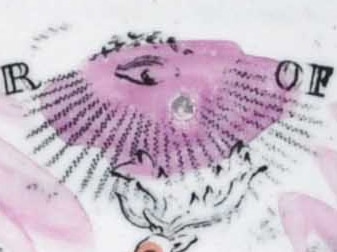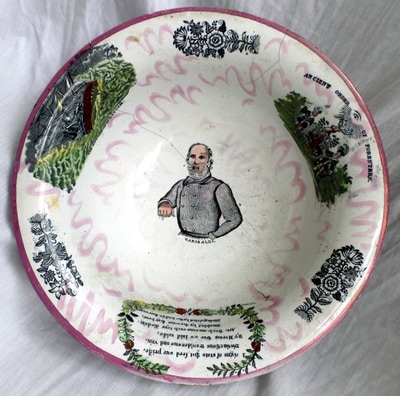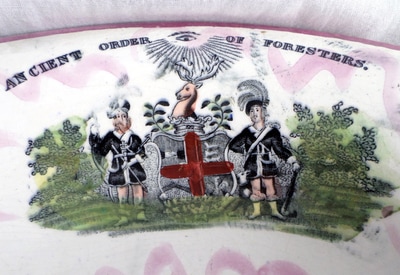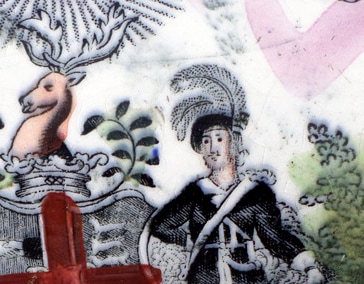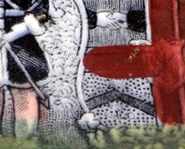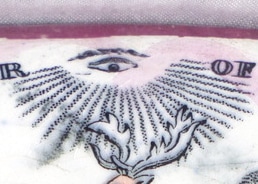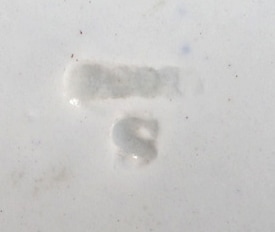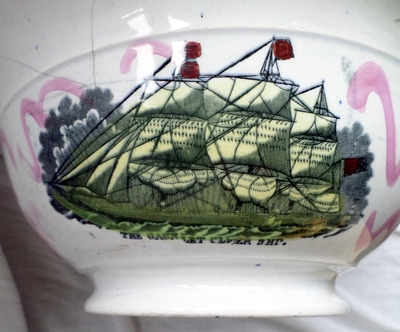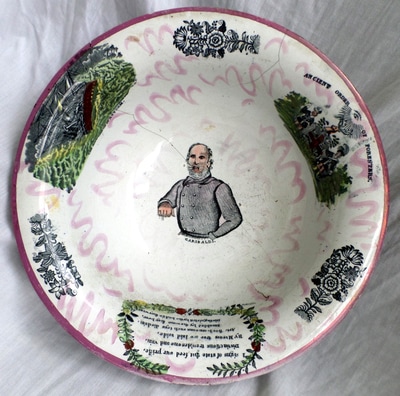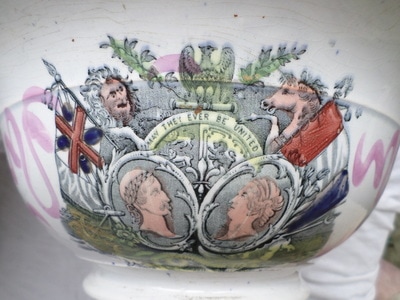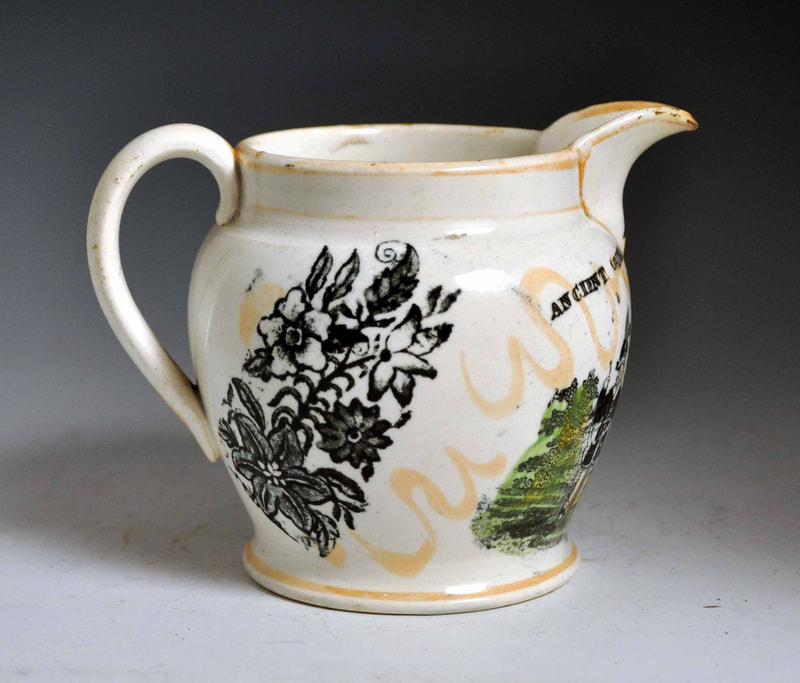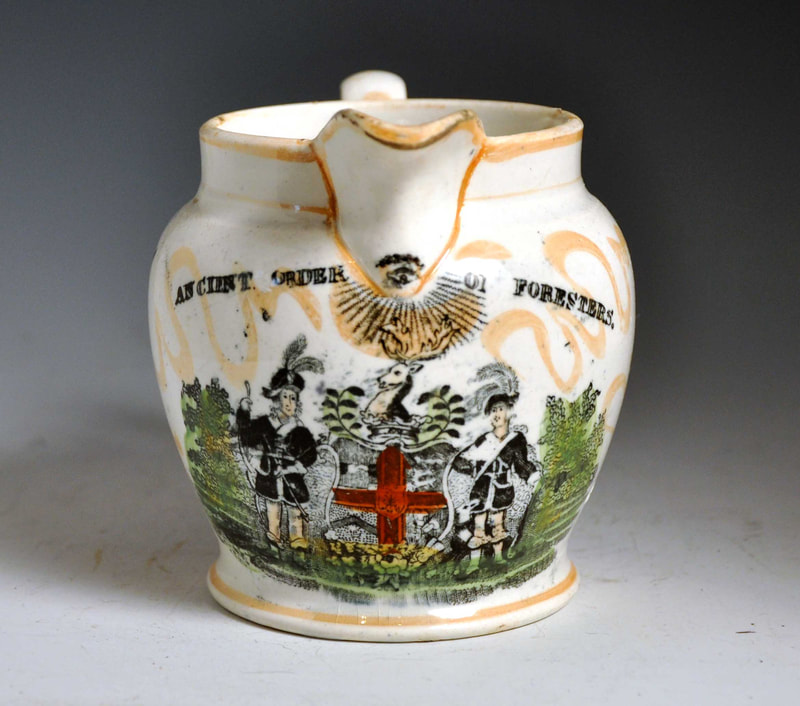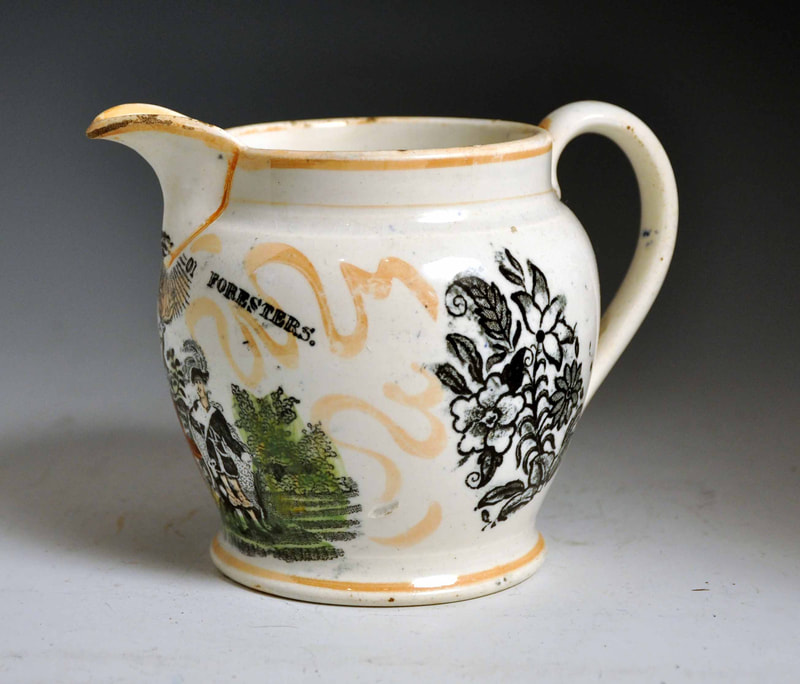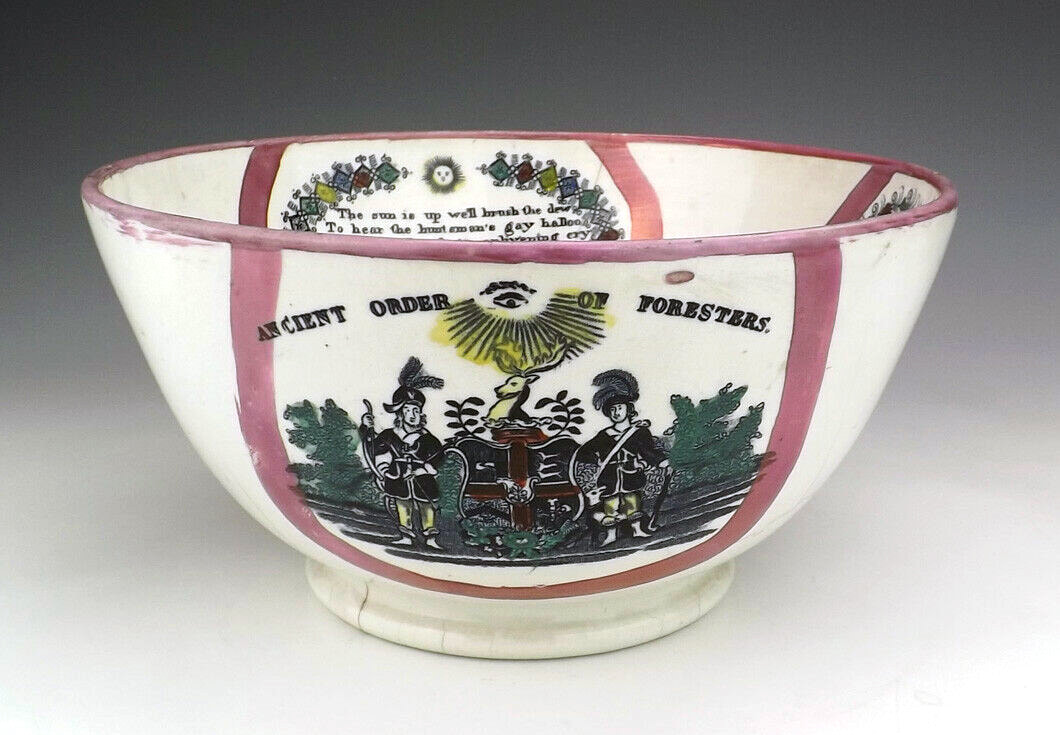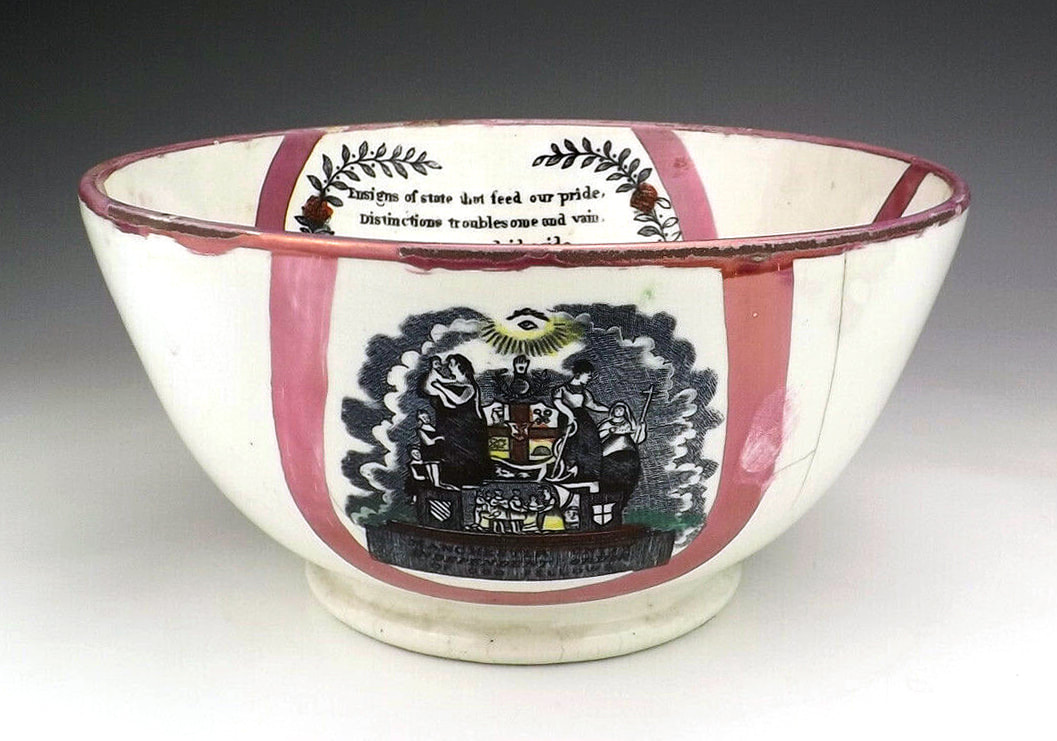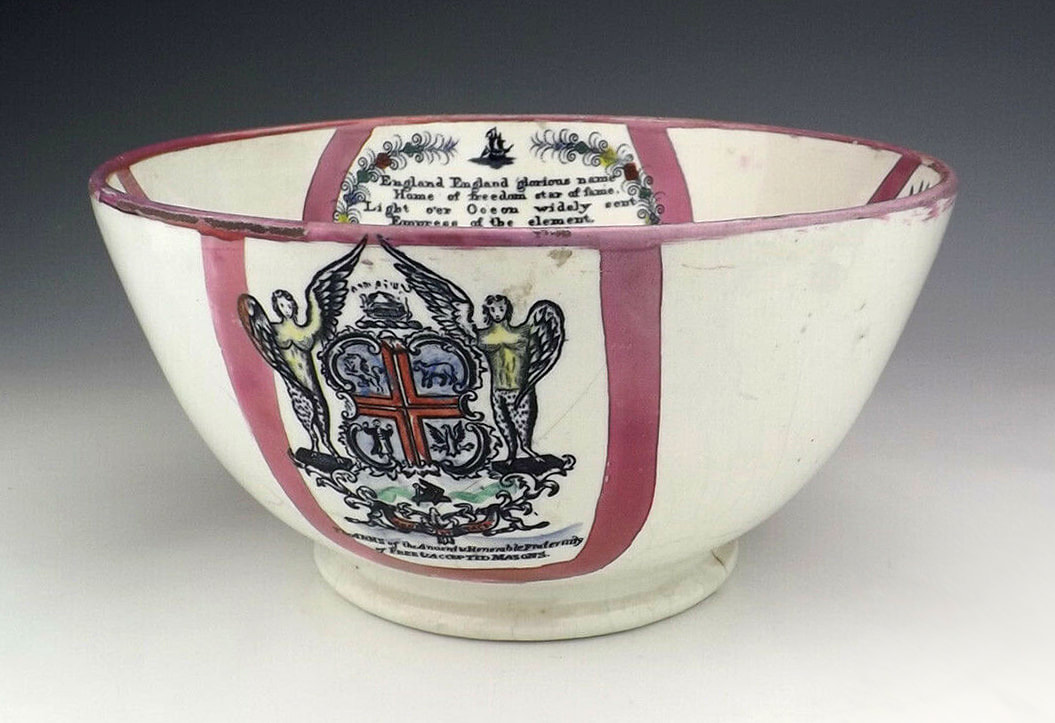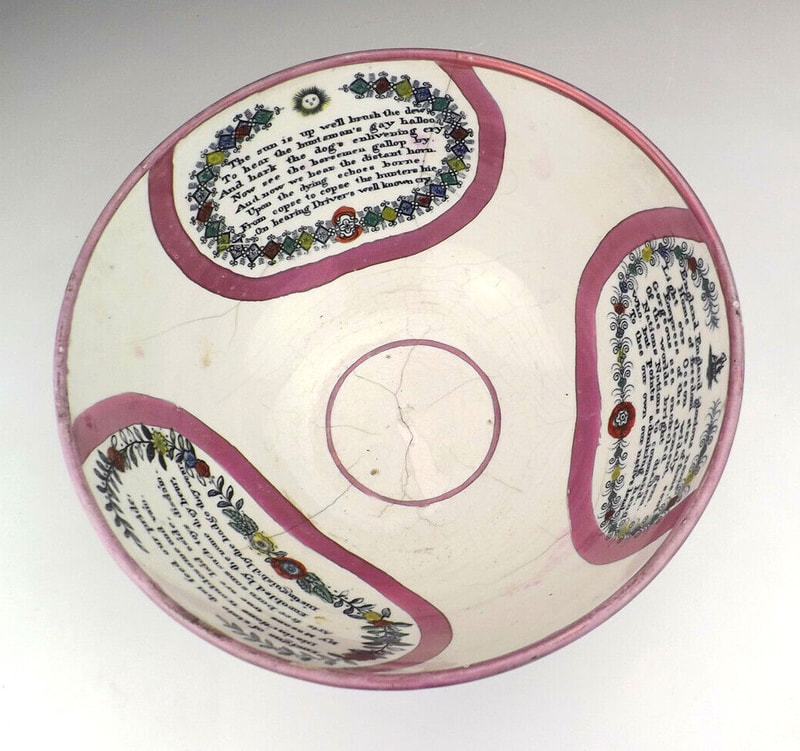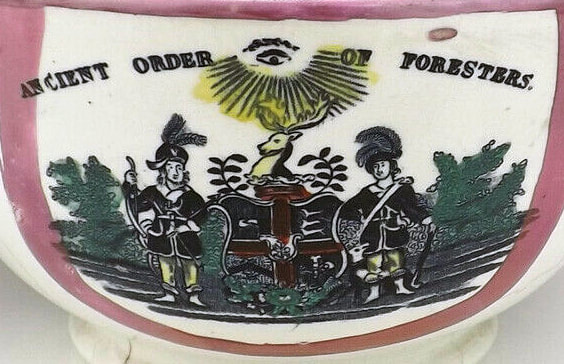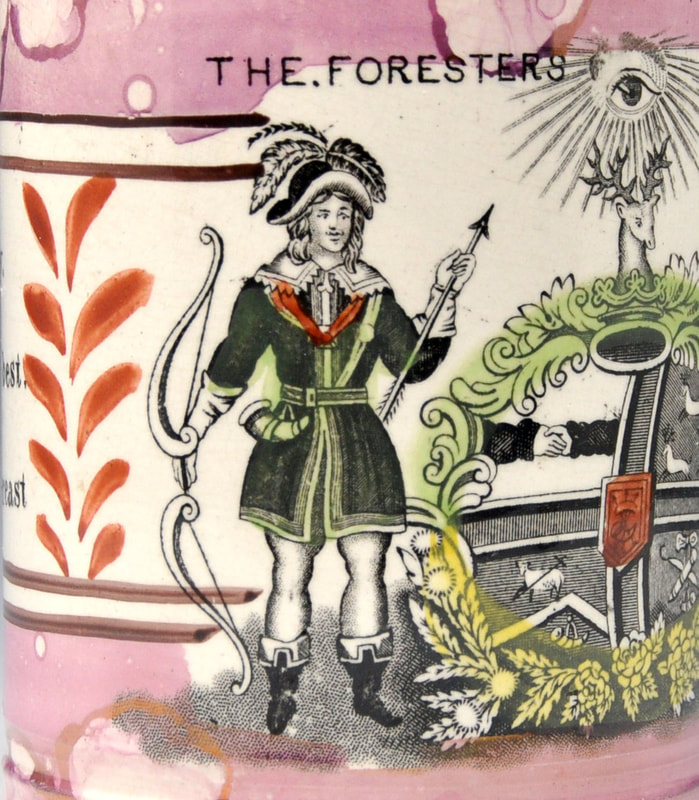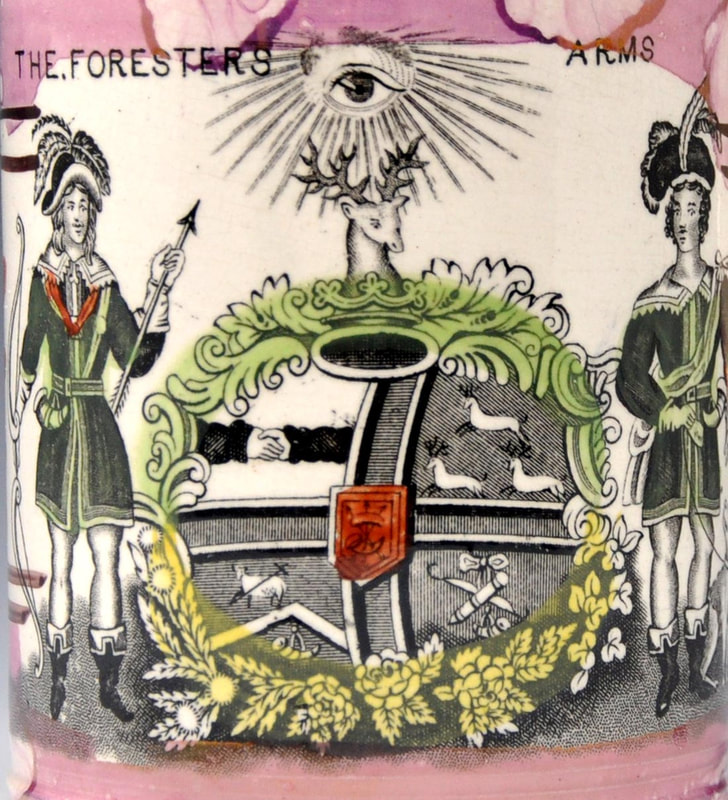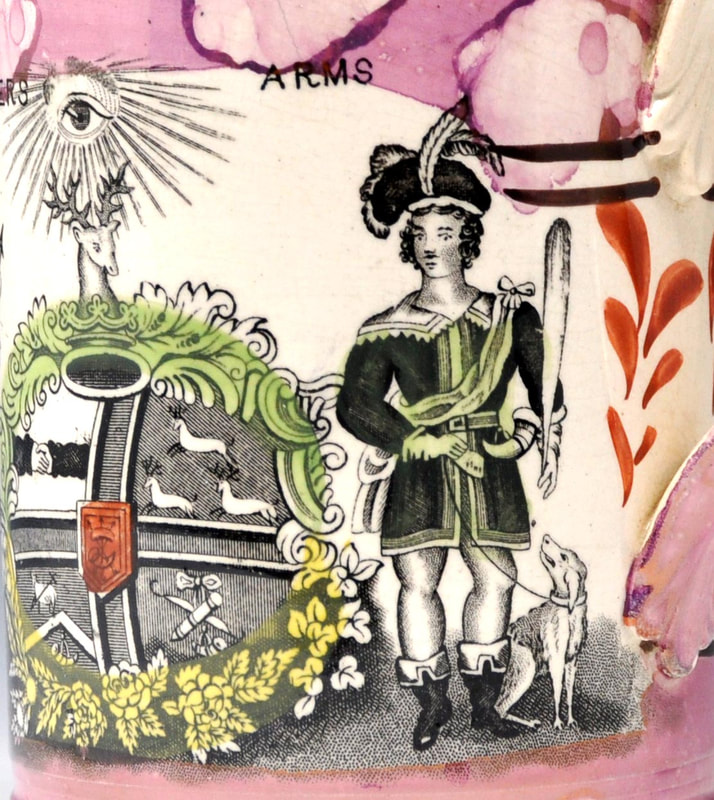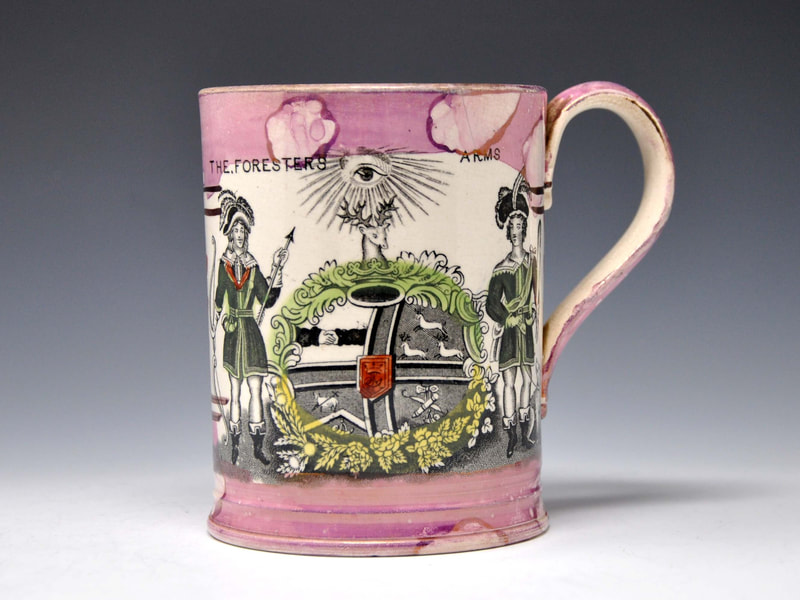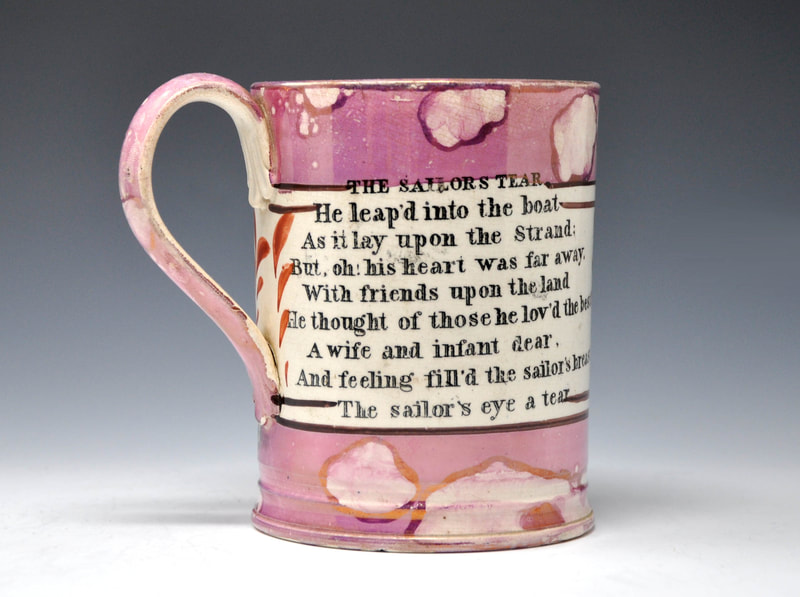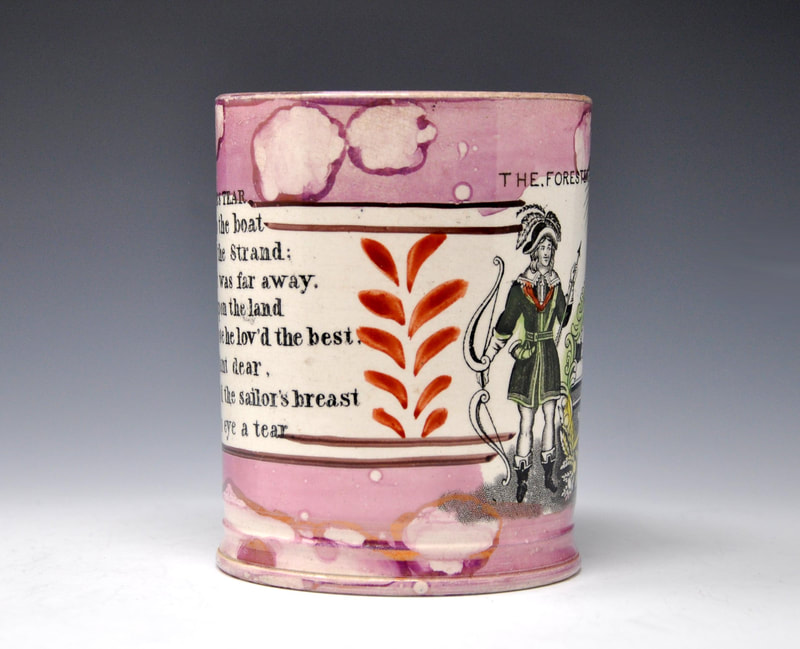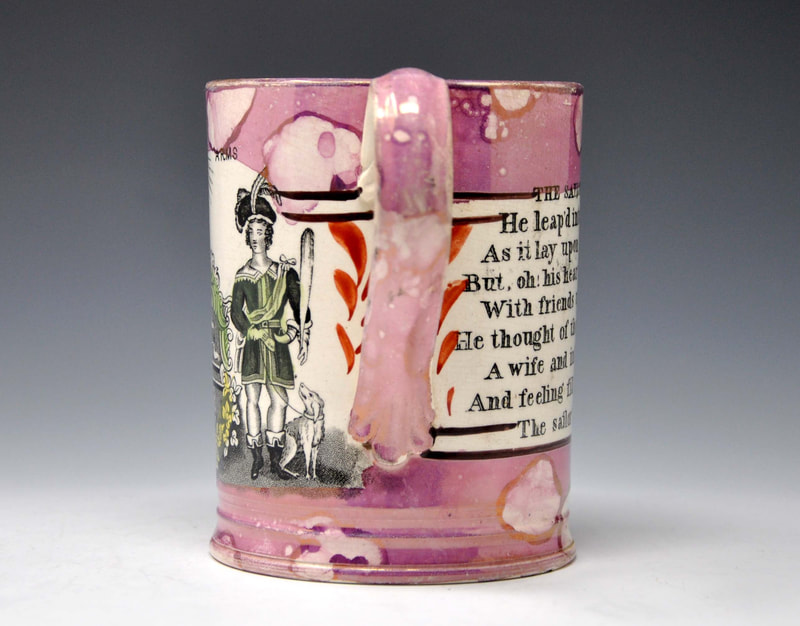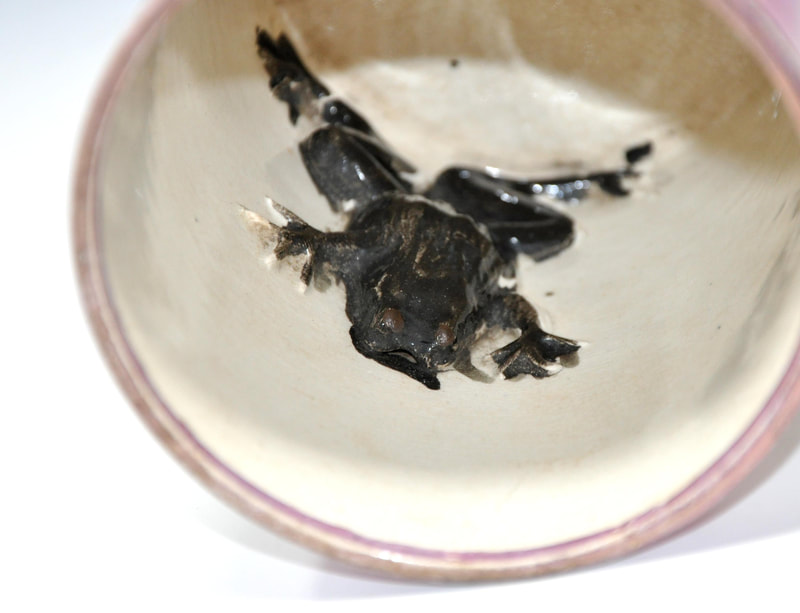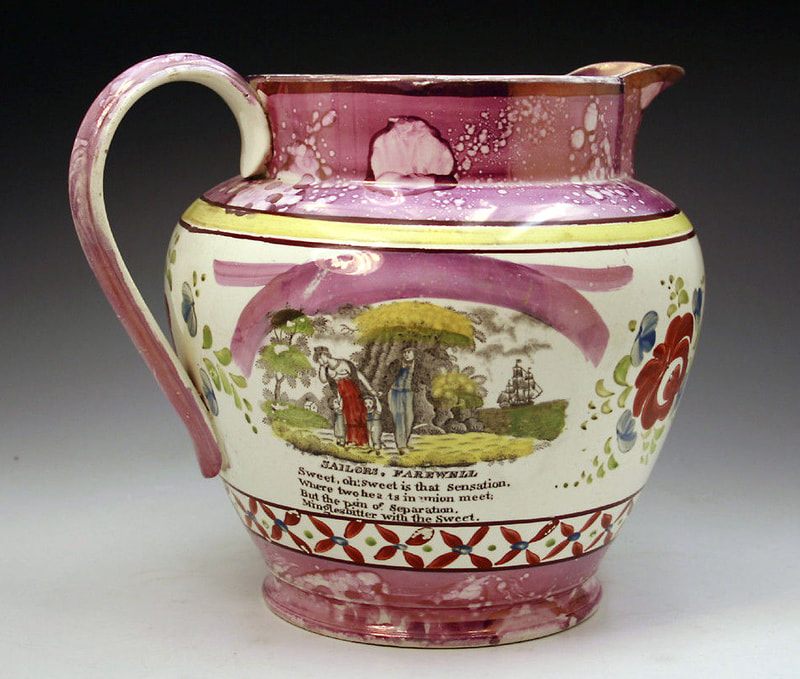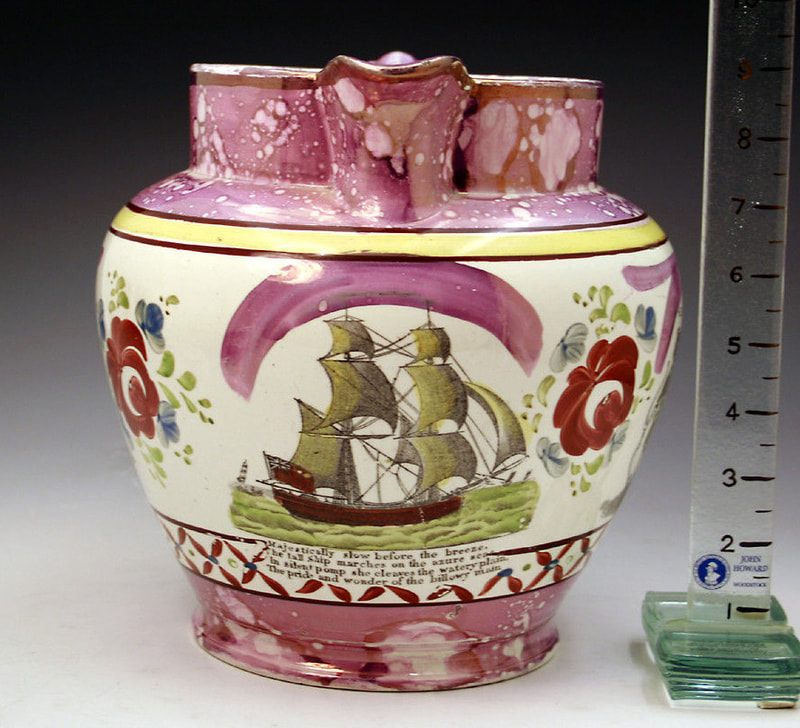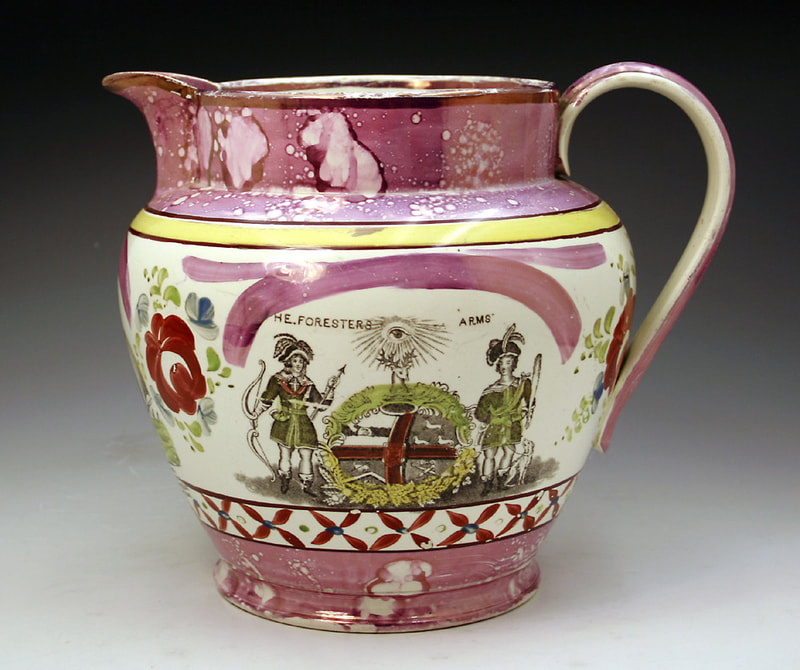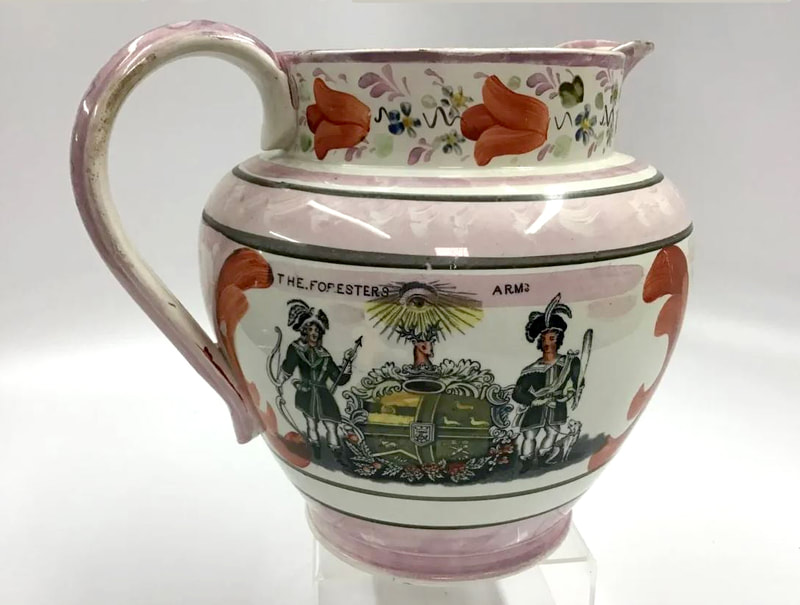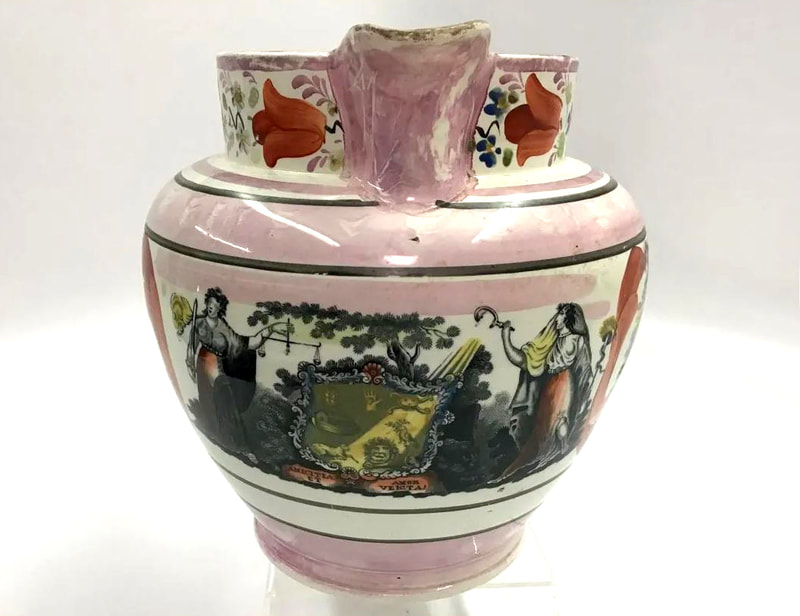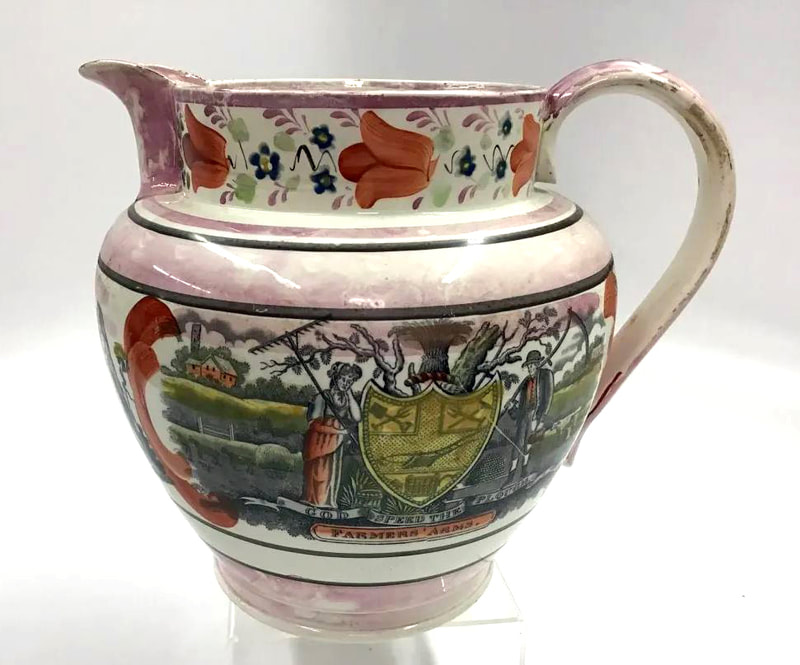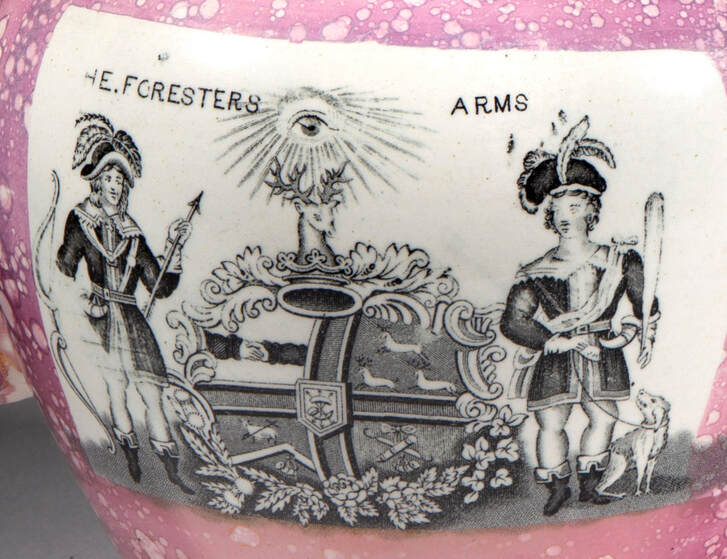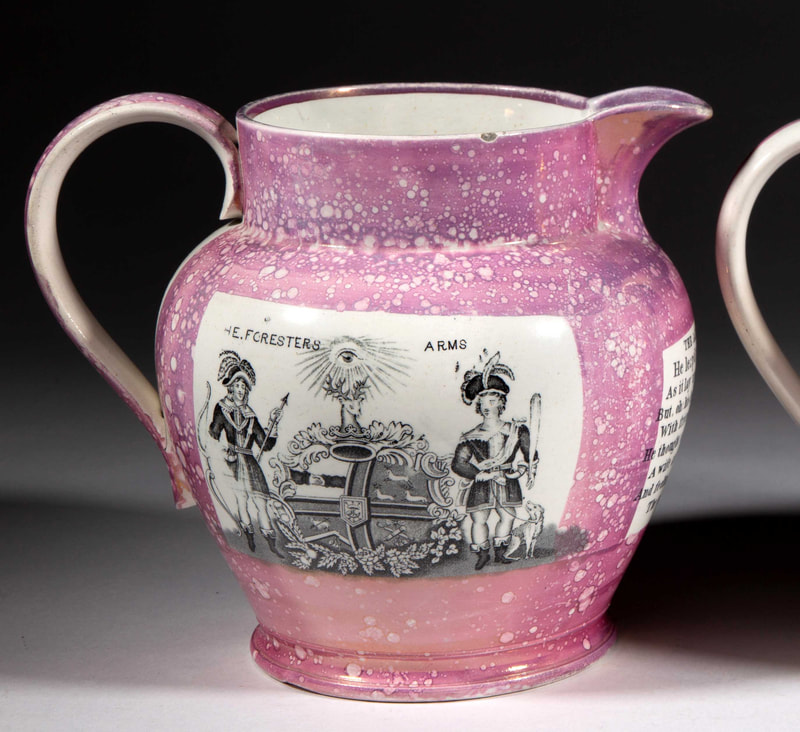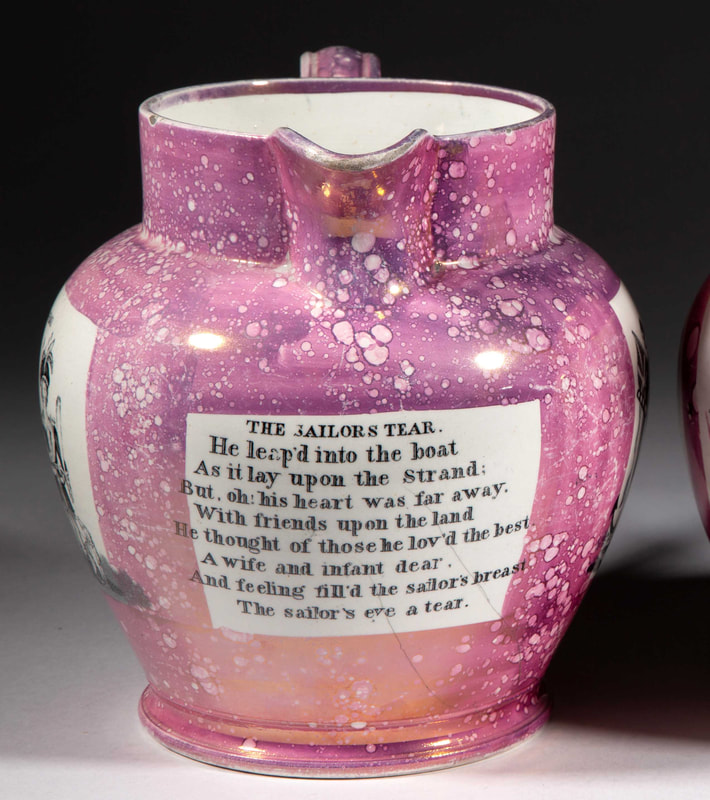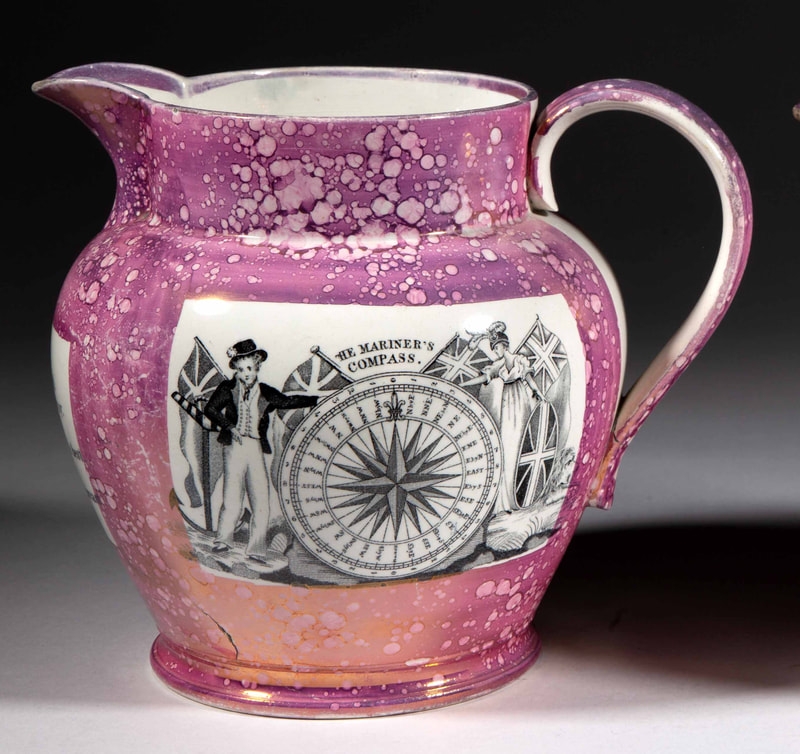Ancient Order of Foresters – Sunderland
|
The 'Garrison Pottery 3' plate appears to be an earlier impression from the copper plate in the Sunderland Museum & Winter Gardens, Tyne & Wear Archives & Museums collection, donated by the Ball family. The transfer plate appears to have been acquired by Scott from Dixon when the Garrison Pottery closed in 1865 and re-engraved in places. It was later acquired from Scott's by Ball's Deptford Pottery. |
|
Garrison Pottery 1
The jug and the slop bowl share a small flaw that doesn't appear on the plaque. Note the mark to the right of the left figure (bottom right detail).
Below, a wash bowl with the 'Dixon Co' impress, over the number '8'. This imprint has the same flaw as the bowl above.
Garrison Pottery 2
The items below appear to come from a different transfer plate. The differences are most obvious in the bottom left detail.
This transfer appears on larger Garrison items like the jug (from c1850).
This bowl is later (c1860) and the transfer plate has worn (compare the bottom left detail with the jug above).
The images below show some of the other transfers on the bowl.
Garrison Pottery 3
This bowl appears to come from the copper plate in the Sunderland Museum, although the images are hard to compare. The lustre decoration on the outside of the bowl appears on marked Dixon items.
Below, a Dixon bowl, c1860 with the Garibaldi transfer from the same copper plate. Typically, for these enamelled Garrison Pottery bowls, the inside is decorated with over-enamels, but the external transfers are not.
Moore's Pottery
This distinctive variation of the transfer appears on Moore's plaques of the 1860s and on later wares marked 'Scott'.
Scott's Pottery
This version of the transfer is very similar to 'Garrison Pottery 3'. Scott's apparently acquired the copper plate after the closure of the Garrison Pottery in 1865. Scott's had it re-engraved. Note the symbol (a hunting horn?) in the lower left quadrant of the shield (bottom left detail) has almost entirely worn away, and compare it with the Garrison 3 version above.
The transfer on the Scott-marked bowl appears to be from the same copper plate as the plaque above. The symbol in the lower left quadrant is yet more degraded.
Orange lustre was introduced in the mid 1860s. On the jug below the Foresters transfer from the Garrison copper plate is combined with typical Scott flower transfers (see also the bowl above) and wavy strokes of orange lustre.
Ball's Deptford Pottery
This is the Garrison Pottery 3 / Scott's version of the transfer above, from the copper plate in the Sunderland Museum, in its final incarnation on a Ball's Pottery bowl. This bowl has transfers from two copper plates recycled from other potteries.
The Foresters Arms – Tyneside
Attributed to Redhead, Wilson & Co, Forth Banks, Newcastle Pottery – 1833–1838
The Tyneside versions have a different title and appear on earlier items from the 1830s and 40s.
This version of the transfer, the splattered looking frog and the red enamel decoration are typical of the Newcastle Pottery in the 1830s.
The yellow band decoration on the first jug below is also typical of Newcastle and appears on items with printed marks. The second has more unusual hand-painted flower decoration to the collar.
Attributed to Wallace & Co, Forth Banks, Newcastle Pottery – 1840s
The same transfer on what I assume to be a slightly later item. The short spout and deep lustre are again typical of the Newcastle Pottery.
